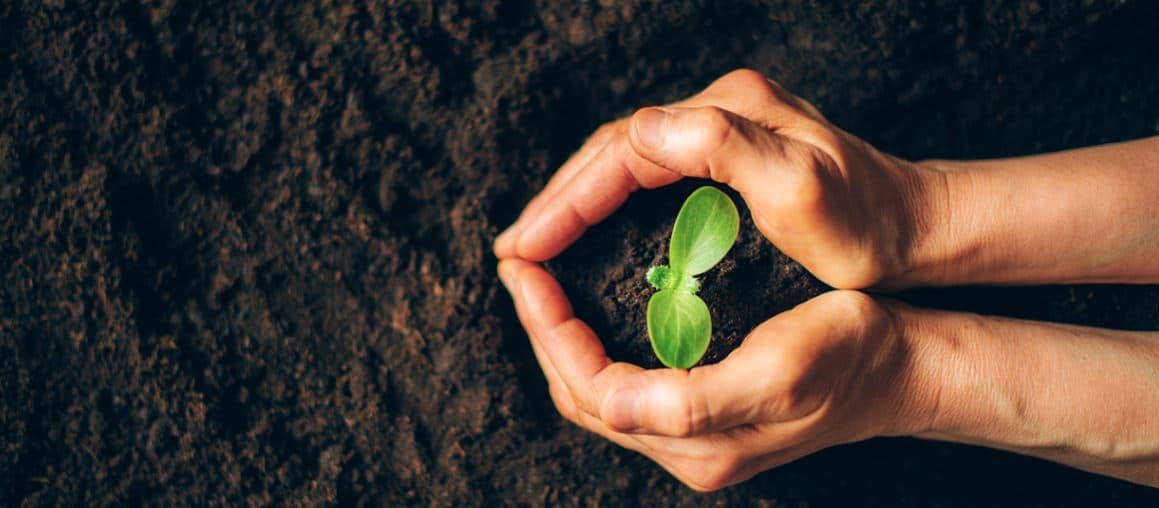This factor is the only one of the five essential growth factors which concerns exclusively the underground organs of plants, the whole of which constitutes the root system.
The study of the factor of cultivation soils and supplementary nutrients leads to the examination of three questions, namely:
· The physical properties of soils;
· The constituent elements of soils;
· The conditions to be respected in terms of fertilization.
To read also: The importance of knowing the nature of the soil in your garden
Physical properties of soils
Soils that can be used for growing balcony and patio plants have certain similarities to the soils of plants grown in the ground. All cultivation soils are made up of four elements: clay, silica (or sand), the basic elements limestone (or carbonate of lime) and humus. Depending on the importance of each of these elements, we denote by:
· Free lands, soils comprising on average 20 to 30% clay, 50 to 70% silica, 5 to 8% limestone and 5 to 6% humus. These lands are the best for cultivation.
· Clay soils, soils with more than 25% clay. These lands are compact and impermeable and the decomposition of organic matter is difficult because they are always quite wet and cold.
· Siliceous soils, soils with more than 70% sand. These lands are permeable and their drying out is rapid. They heat up as quickly as they cool down.
· Limestone lands, soils with more than 20% lime carbonate. These lands are generally dry, pulverulent and not very favorable for the development of the roots. The plants that can grow there are called calcicole plants. They are only found very exceptionally in balcony and terrace plants; there may be mentioned, in particular, plants of the genus Lathyrus.
· Humus lands, soils with more than 15% humus (matter resulting from the decomposition of animal or vegetable substances, such as: manure, under the influence of air, leaves, stems, roots, humidity and micro- organizations). These soils, rich in organic matter, are often acidic due to the excess water, which makes them particularly cold. They lack lime carbonate, which makes them favorable to the cultivation of calcifuge plants (that is to say, fearful of limestone); this is the case with azaleas and ferns.
· Compound lands, soils which contain in a dominant quantity two of the four constituent elements, the most important element always being mentioned first. This is how we meet clay-siliceous, clay-limestone, silico-clay, silico-limestone, silico-humus soils.
When resting on permeable soil, these lands are fertile because their building blocks complement and correct each other.
For the constitution of the cultivated grounds of the balconies and the terraces, the grounds most frequently used are the loam (black ground of garden), the siliceous ground, the compound ground (mainly the silico-argillaceous ground) and, when These are calcifuge species, the earth humus.
Since the waterings have the effect of compacting the soil, especially when the evacuation of excess water is difficult, and of reducing its aeration, the use of too compact soils, in particular land, must be avoided. clay soils.

Components of crop soils
To ensure their normal development, all species must be able to find in cultivated soils, in addition to the four basic elements, a number of other elements with physical and chemical properties. These complementary elements always have an artificial origin, because they are added to the soil according to the particular needs of the plants.
These complementary elements include: sand, heather soil, manure soil and peat.
The sand
Since silica – or silicon oxide – generally cannot be used in its pure state in cultivation soils, it is compounds referred to as sand that can be incorporated into it. The sand, depending on its origin, has a very variable consistency and composition and can be used either as a foundation for the soil during cuttings, or as an element to be incorporated in order to reduce the compactness. In the first case, there is nothing to prevent the sand from being composed of almost pure silica.
Heathland
This comes from the decomposition, in siliceous earth, of plants belonging to the genera Calluna and Erica, which include most of the heather, as well as some plants of the genus Molinia (molinia), family Graminaceae.
Due to these various origins, the physical and chemical makeup of heather earth is very variable. There are sandy heather lands, compact humus, each with different properties. The first two are permeable and have a high caloric capacity; they retain water well, but are difficult to water, while the latter retains water excessively and contains certain chemicals that are harmful to plant growth.
On the other hand, humus-bearing earth has the disadvantage of settling quickly and therefore becomes impermeable to water and impenetrable to air.
Leaves potting soil
The physical properties of leaf compost vary depending on its origin, but in general this compost constitutes a very permeable medium and is able to absorb up to twice its weight in water.
The leaves of beech, birch, maple and horse chestnut form, after decomposition, the best soil. However, oak, chestnut and hornbeam leaves, although rich in tannin, are not to be overlooked.
Leaf molds always contain a certain amount of lime.
Layering soil
It is generally used in various earthy mixtures for plants grown in pots. It comes from the decomposition of fermentable materials (straw or litter accompanied by animal droppings) and is used in the manufacture of layers used in the open air for hasty cultivation or forced cultivation.
In many cases the manure of layers is accompanied by a more or less large quantity of leaves, in order to regulate, at the time of fermentation, the increase in temperature.
Often referred to as manure compost, layer compost heats up quickly, retains a lot of water and constitutes an important reserve of humus. It always contains a certain proportion of lime in an assimilable form, which makes it unsuitable for the cultivation of calcifuge species, when it is mixed alone with heather earth.
This soil can more than any other contain many germs of diseases, eggs and larvae of insects. It is therefore important, before use, to get rid of these various parasites; heat brought to an oven degree is the best way to achieve this.
Peat
It comes from the decomposition into an acid swamp of fossil plants of the Cyperaceae and Droseraceae family and of the Muscinea class.
Peat is frequently used in the cultivation of potted plants, added to the other elements constituting the earthy mixtures, in particular to the heather earth. It is then used as an amendment, because it improves the structure of the cultivated soil and its water retention capacity.
Read also :








